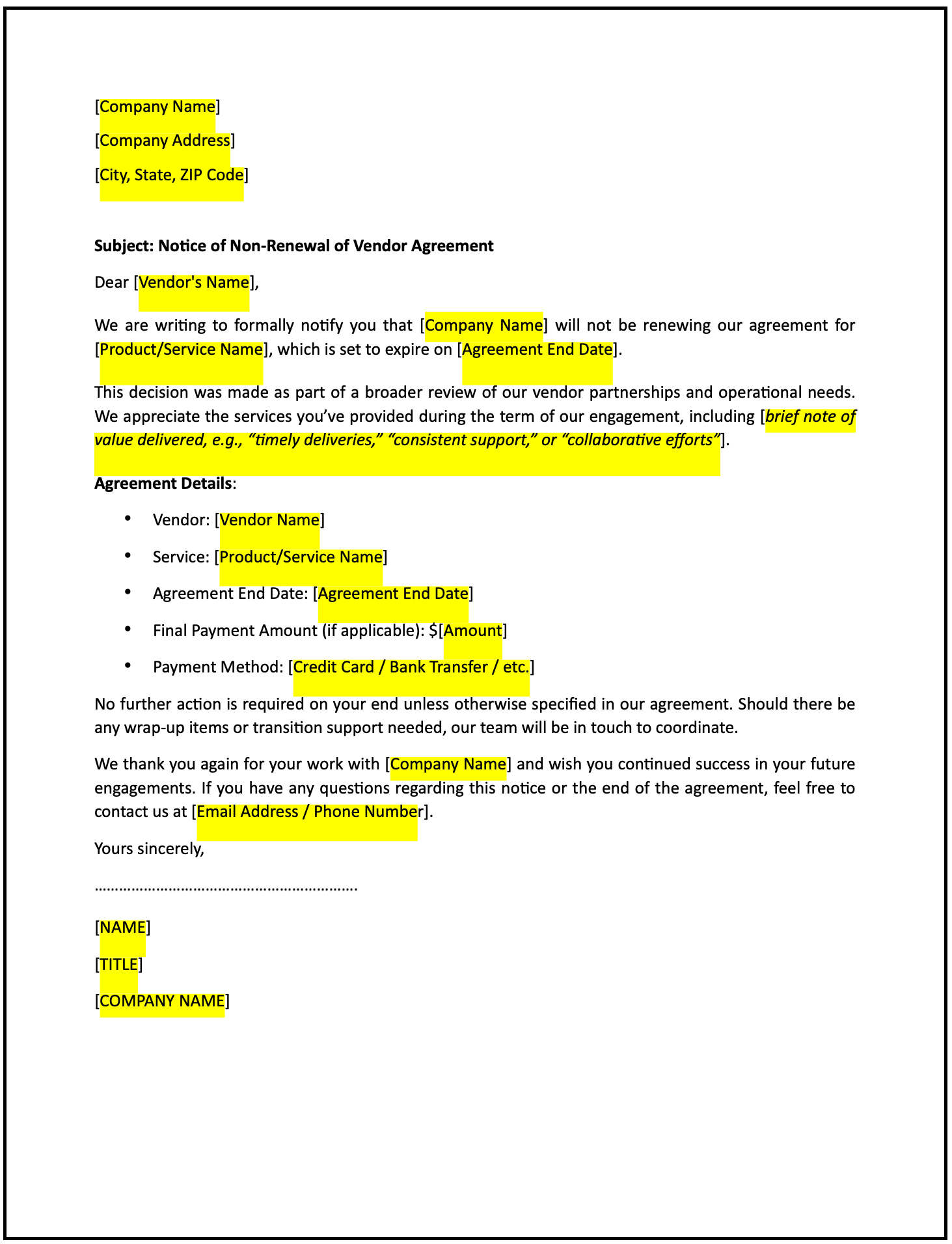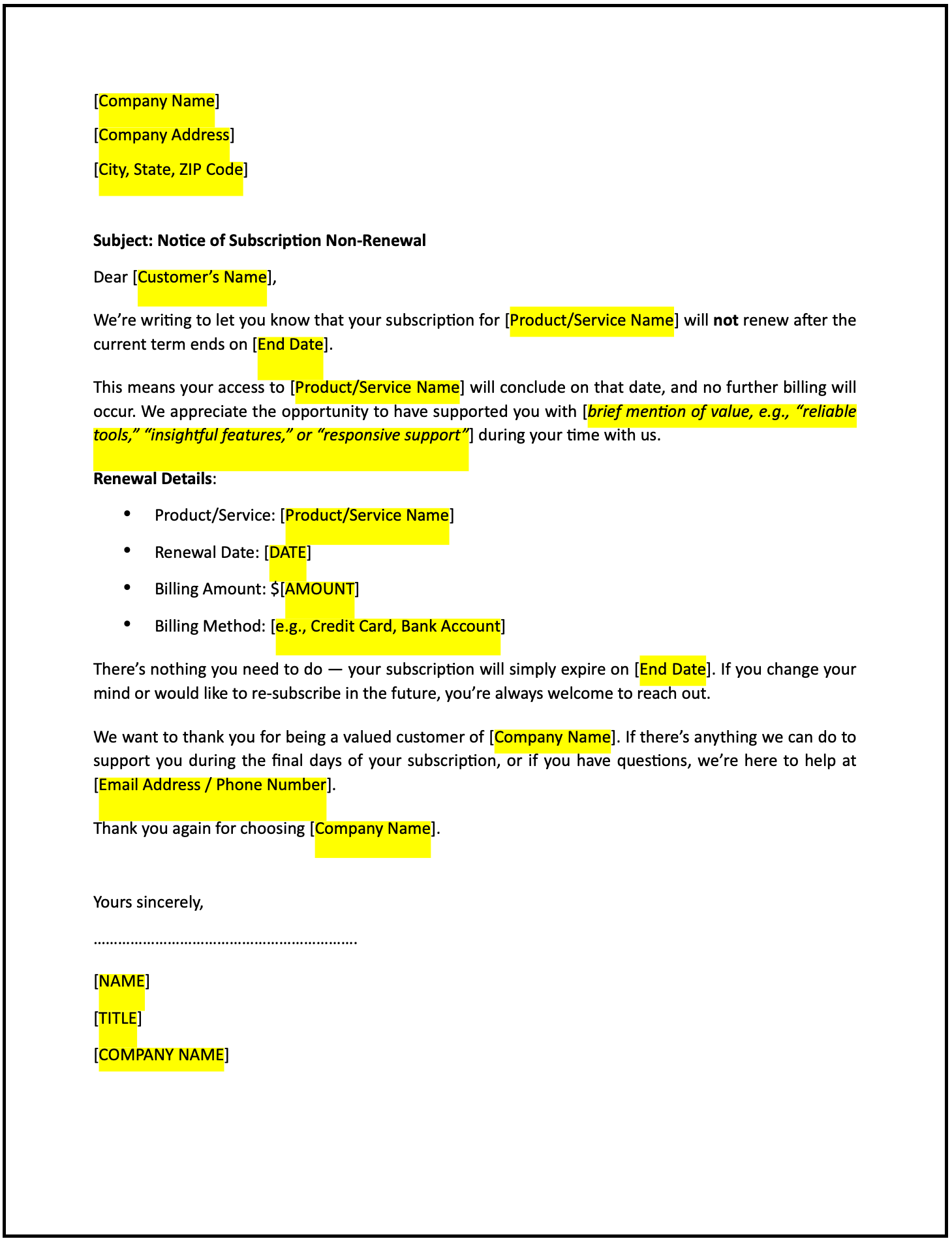Notification letter of alleged breach of non-solicitation clause: Free template

Notification letter of alleged breach of non-solicitation clause (to new employer and former employee)
A notification letter of an alleged breach of a non-solicitation clause is a formal way to inform both the former employee and their new employer about a potential violation of contractual obligations. This letter outlines the breach, asserts your rights, and seeks corrective action to resolve the issue amicably.
How to use this notification letter of alleged breach of non-solicitation clause
- Open with context: Begin by referencing the employment or service agreement containing the non-solicitation clause and its relevance.
- Identify the breach: Clearly describe the actions constituting the alleged breach, such as soliciting clients, employees, or vendors covered by the clause.
- Provide evidence: Include relevant documentation or details, such as agreements, correspondence, or witness statements, that support your claim.
- Address the new employer: Notify the new employer about the non-solicitation clause and their potential involvement in the breach.
- Assert your position: Emphasize the enforceability of the non-solicitation clause under applicable laws and its significance to your business.
- Request corrective action: Specify the remedies sought, such as ceasing solicitation, withdrawal from conflicting activities, or assurances against future breaches.
- Highlight consequences: Mention potential legal actions if the breach is not promptly resolved.
- Maintain a professional tone: Ensure the letter is respectful, clear, and focused on fostering resolution.
- Provide contact information: Include details for further communication or clarification if needed.
Benefits of using a notification letter of alleged breach of non-solicitation clause
This letter template ensures a structured and professional way to address alleged breaches while fostering resolution and protecting your business interests. Here’s how it helps:
- Protects your interests: Clearly asserting your rights under the non-solicitation clause demonstrates your commitment to enforcing the agreement.
- Encourages compliance: Notifying both the former employee and their new employer increases the likelihood of resolution.
- Reflects professionalism: A well-crafted letter reinforces your credibility and seriousness.
- Reduces disputes: Clear communication minimizes misunderstandings and promotes constructive dialogue.
- Supports documentation: Creating a formal record of the allegation is valuable for future reference or legal proceedings.
Tips for writing an effective notification letter of alleged breach of non-solicitation clause
- Be specific: Clearly reference the agreement, outline the alleged breach, and provide supporting evidence.
- Use professional language: Maintain a respectful yet assertive tone to convey the seriousness of the matter.
- Address all parties: Ensure the letter is directed to both the former employee and the new employer.
- Highlight implications: Explain how the breach negatively impacts your business to emphasize its importance.
- Request corrective action: Specify the actions required to resolve the issue and prevent further violations.
- Keep it concise: Focus on the key points without overwhelming the recipients with unnecessary details.
Frequently asked questions (FAQs)
Q: What details should I include in this letter?
A: Include references to the agreement, details of the alleged breach, supporting evidence, requested corrective actions, and potential consequences for non-compliance.
Q: Should I personalize the letter?
A: Yes, addressing both parties directly ensures clarity and demonstrates attentiveness.
Q: Who typically receives this letter?
A: Send the letter to the former employee alleged to have breached the non-solicitation clause and their new employer.
Q: How formal should this letter be?
A: The tone should be highly professional and assertive to ensure the seriousness of the matter is communicated.
Q: When should this letter be sent?
A: Send the letter promptly after identifying the breach to demonstrate your commitment to resolving the issue.
Q: Can this letter include legal consequences?
A: Yes, mentioning potential legal action if the breach is not addressed reinforces the urgency and importance of the demand.
Q: Is acknowledgment from the recipient required?
A: While not mandatory, requesting confirmation of receipt or compliance ensures the issue is addressed effectively.
This article contains general legal information and does not contain legal advice. Cobrief is not a law firm or a substitute for an attorney or law firm. The law is complex and changes often. For legal advice, please ask a lawyer.


